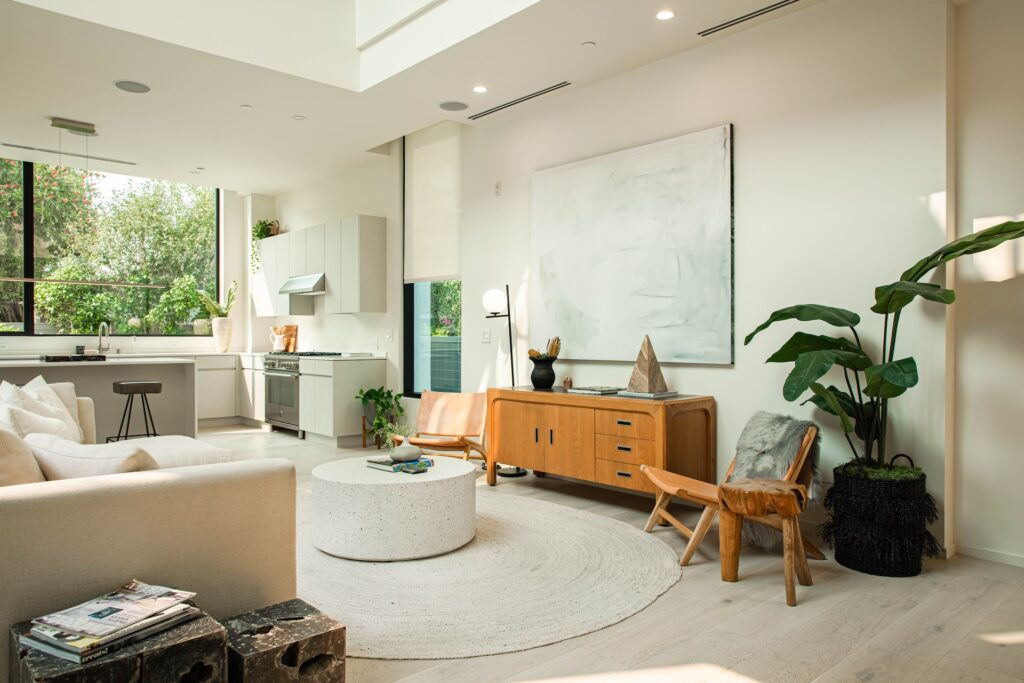Are you looking to bring a touch of green into your home but don’t have a green thumb? Look no further! In this article, we will explore a collection of my favorite indoor plants that are not only beautiful but also low-maintenance. Whether you are a seasoned plant parent or a newbie, these plants are sure to thrive under your care.
Indoor plants not only enhance the aesthetics of your home but also provide numerous health benefits. They purify the air, boost mood, reduce stress, and promote productivity. With the right selection of indoor plants, you can create a tranquil and vibrant atmosphere in any room.
Benefits of Having Indoor Plants
Indoor plants are more than just decorative elements; they offer a multitude of benefits for your physical and mental well-being. One of the primary advantages of having indoor plants is their ability to purify the air by removing toxins and releasing oxygen. This can improve the overall air quality in your home and reduce the risk of respiratory problems.
Additionally, indoor plants have been shown to boost mood and reduce stress. The presence of greenery and natural elements can have a calming effect on our minds, helping to create a peaceful and serene environment. Studies have also found that indoor plants can enhance productivity and concentration, making them a great addition to home offices or study areas.

The Best Indoor Plants for Beginners
If you’re new to indoor gardening, it’s essential to start with plants that are easy to care for and require minimal maintenance. One of the best indoor plants for beginners is the snake plant. With its striking vertical leaves and ability to tolerate a wide range of light conditions, it’s a hardy plant that can thrive even in low-light areas.
Another beginner-friendly plant is the pothos. Known for its cascading vines, the pothos is incredibly resilient and can adapt to various lighting conditions. It’s an excellent choice for hanging baskets or as a trailing plant on shelves or bookcases.
For those looking for a plant that adds a pop of color, the zz plant is a great option. With its glossy, dark green leaves, it can brighten up any room. The zz plant is also drought-tolerant and can withstand low light, making it a perfect choice for forgetful or busy plant owners.
Caring for Indoor Plants – Watering, Light, and Temperature Requirements

Proper care is crucial for the health and longevity of indoor plants. Each plant has specific watering, light, and temperature requirements that should be followed to ensure optimal growth.
When it comes to watering, it’s essential to strike a balance. Overwatering can lead to root rot, while underwatering can cause the plant to wither. The frequency of watering depends on the plant species, pot size, and environmental conditions. It’s always a good idea to check the moisture level of the soil before watering.
In terms of light requirements, some plants thrive in bright, indirect light, while others can tolerate lower light conditions. It’s important to place your plants in a location that provides the right amount of light for their specific needs. Additionally, rotating the plants periodically can help ensure even growth and prevent them from leaning towards the light source.
Temperature is another factor to consider when caring for indoor plants. Most houseplants prefer temperatures between 65-75°F (18-24°C). Avoid placing them near drafts or in areas with extreme temperature fluctuations, as this can stress the plants. It’s also important to note that some plants have specific temperature preferences, such as tropical plants that thrive in higher humidity.
Indoor Plant Decor Ideas
Incorporating indoor plants into your interior design can add a touch of nature and create a visually appealing space. There are various ways to incorporate plants into your decor, depending on your personal style and the available space.
One popular trend is creating a plant shelf or plant wall. This involves arranging plants of different sizes and heights on floating shelves or mounting them on a wall. This not only adds visual interest but also maximizes vertical space, making it ideal for small apartments or rooms with limited floor space.
Another creative idea is to use plants as centerpieces or focal points. For example, a large potted plant can serve as a statement piece in the living room, while a cluster of smaller plants can be arranged on a coffee table or dining table. Adding decorative planters or plant stands can further enhance the visual appeal.
Common Indoor Plant Problems and How to Solve Them
Despite our best efforts, indoor plants can sometimes encounter issues that affect their health and appearance. Understanding common problems and their solutions can help ensure the well-being of your plants.
One common issue is overwatering, which can lead to root rot and yellowing leaves. To prevent overwatering, always check the moisture level of the soil before watering and ensure proper drainage. If you notice signs of overwatering, such as wilting or mushy roots, reduce the frequency of watering and allow the soil to dry out between waterings.
Another problem is inadequate light, which can cause plants to become leggy or lose their vibrant colors. If your plants are not getting enough light, consider moving them to a brighter location or supplementing with artificial grow lights. On the other hand, if your plants are receiving too much direct sunlight, they may develop scorched leaves. In this case, provide some shade or filter the light with sheer curtains.
Indoor Plant Propagation and Repotting
Propagating indoor plants is a rewarding way to expand your plant collection or share plants with friends and family. Many indoor plants can be propagated through various methods, such as stem cuttings, division, or leaf cuttings.
Before propagating, it’s important to ensure that the parent plant is healthy and free from pests or diseases. Use clean, sharp tools to make clean cuts and provide the right conditions for the new plants to root and establish themselves. It’s also crucial to research the specific propagation requirements for each plant species, as some may require rooting hormone or specific environmental conditions.
Repotting is another important aspect of indoor plant care. As plants grow, they may outgrow their current pots or deplete the nutrients in the soil. Repotting allows for fresh soil and provides more space for root growth. When repotting, choose a pot that is slightly larger than the current one and use well-draining soil to prevent waterlogged roots.
Where to Buy Indoor Plants
Finding high-quality indoor plants is essential for their long-term health and vitality. There are several options for purchasing indoor plants, depending on your preferences and location.
Local nurseries and garden centers are a great place to start. They often have a wide selection of plants and knowledgeable staff who can provide guidance on plant care. It’s also a good opportunity to inspect the plants before purchasing and ensure they are healthy and pest-free.
Online plant retailers have gained popularity in recent years, offering a convenient way to shop for indoor plants. Many online retailers specialize in indoor plants and ship them directly to your doorstep. However, it’s important to research the retailer’s reputation and read reviews from other customers to ensure a positive buying experience.
Indoor Plant Maintenance Tips
Maintaining the health and vibrancy of indoor plants requires consistent care and attention. Here are some general maintenance tips to keep your plants thriving:
- Regularly dust the leaves to remove accumulated dirt and allow for better light absorption.
- Monitor the moisture level of the soil and adjust watering frequency accordingly.
- Fertilize your plants regularly to provide essential nutrients. Use a balanced, water-soluble fertilizer and follow the instructions for application.
- Inspect your plants for signs of pests, such as aphids or spider mites. If you notice any pests, take appropriate measures to eliminate them, such as using organic insecticidal soap or neem oil.
- Prune your plants as needed to remove dead or yellowing leaves and promote bushier growth.
- Keep an eye on the overall health of your plants, including any changes in leaf color, growth patterns, or signs of distress. Address any issues promptly to prevent further damage.
Conclusion and Personal Recommendations
Indoor plants are a fantastic addition to any home, bringing beauty, tranquility, and numerous health benefits. They can transform any space into a lush oasis and provide a sense of connection with nature.
In this article, we explored a collection of my favorite indoor plants that are perfect for beginners and low-maintenance. From the trendy snake plant to the resilient pothos and the vibrant zz plant, there are options for every taste and style.
Remember to consider the specific care requirements of each plant, including watering, light, and temperature needs. With proper care and attention, your indoor plants will thrive and continue to enhance your living space for years to come.
So go ahead and start your indoor plant journey. Discover the joy of nurturing these green companions and enjoy the benefits they bring to your home and well-being. Happy gardening!




